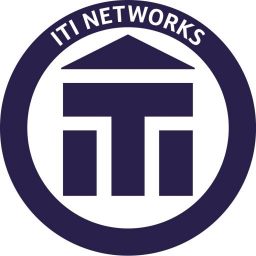Hosted by the ITI French Network
by Hayley Leva
The second FrenchNet webinar of 2020 was given by Cathy Waibel, Head of the Directorate of Citizens’ Language at the European Parliament. Cathy gave us a fascinating behind-the-scenes tour of the translation and editing work carried out at the European Parliament, and of the role of the Clear Language and Editing unit in particular. For those of you who missed it, here’s what we learned.
Cathy started with some background information, reminding us that the European Parliament is the only EU institution whose members are directly elected by citizens and that the principle of multilingualism is enshrined in EU legislation, such as Council Regulation No. 1/1958, which sets out the official languages of the EU.
This legal basis has significant implications for translation and interpreting in the European Parliament. Consider this. There are currently 24 official languages. Every MEP (Member of the European Parliament) is entitled to speak and write in the language of their choice, and needs to understand texts written in the other languages in order to vote. And every EU citizen has to be able to follow the legislative process and communicate with the European Parliament in their own language. Cathy invited us to do the maths: how many language pairs have to be covered?*
All translation for the European Parliament is handled by the Directorate-General for Translation. With more than 1,000 members of staff, including 600 translators, it’s the largest of Parliament’s directorates. Between them, the translators cover all 24 languages, only occasionally resorting to relay translation (translating from Lithuanian to Spanish via English or French for example). They translate texts both for MEPs and for citizens, thus facilitating linguistic diversity within the Parliament and bringing the EU closer to its citizens.
Next, we looked at the work of the Clear Language and Editing Unit, which was created due to a growing need for English editing services and later expanded to cover French too. Cathy shared some figures to put things into context. In 2019, 75% of drafting was done in English (followed by 12% in French), and texts produced by non-native speakers accounted for around 80% of this.
The role of the editing team is to polish texts before they are translated and/or published. Most of the editors have a background in translation and/or interpreting, which Cathy pointed out is very helpful when it comes to spotting foreign-language interference. She also stressed that tact and diplomacy are crucial too, as all changes have to be submitted to the authors for approval.
The Editing Unit has also introduced several services aimed at improving the quality of English originals and making them easier to translate. This includes organising drafting workshops, performing “live editing” during meetings, and running an English-language helpline (while keeping tabs on callers who attempt to bypass the proper channels for translation!)
Another key mission of the unit is to promote the use of Clear English (also called Plain English). Cathy explained that writing in Clear English does not mean oversimplifying information. Rather, it is about creating texts that are easy to understand. We looked at before-and-after versions of a letter to an EU citizen to see Clear English in action. The edited letter was more than 30% shorter, less bureaucratic, and had a more human touch.
Last but not least, Cathy told us about the “new dimension” that the unit has entered: audio. The first audio project (in 2017) was an online European Parliament radio stream. The idea was to share Parliament news in a way that would speak to EU citizens not simply in their own language, but in their own words. Cathy admitted that the project was something of a reality check for the linguists involved. They had to accept that their existing (written) content was not suited to its intended audience and would need rewriting to make it radio-friendly. In particular, this meant using clear language and focusing on storytelling to capture the audience’s attention.
Since 2017, the unit has published thousands of podcasts and recordings on various platforms, including the “What Europe does for me” and “My House of European History” websites and the Citizens’ App. Some of the content is original, and some is adapted from written materials. The team also does voice-over and subtitling work and produces summaries in both written and audio formats. It was interesting to hear that the recording work is done on a voluntary basis, often by EU translators and interpreters, and that there is even a dedicated “Voice Pilates” coach on hand to provide advice.
We concluded with a Q&A session during which Cathy shared some practical tips on maintaining target-language fluency (listen to national radio stations and read newspapers in your target language), useful Plain English resources (the Oxford Guide to Plain Language; unfortunately no good equivalent exists for French yet) and information for anyone interested in translation and editing jobs at the European institutions (check out the EPSO website).
Thank you Cathy, and thank you FrenchNet for another interesting webinar!
—
*The answer is 552 – a “huge logistical challenge,” as Cathy put it!
